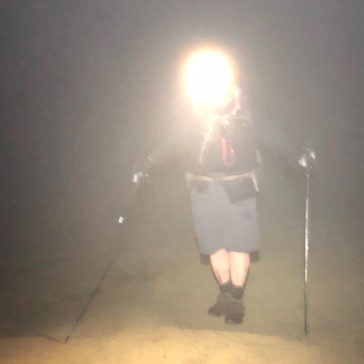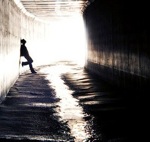I have been slowly moving from the world of backpacking into the world of mountaineering and was wondering if anyone on this forum would have some solid advice for a good starting mountaineering rack. I have so far found the following suggestions regarding the pro that I should carry on a basic mountaineering rack which is (each listing is for one piece of pro only):
BD Hexacentric Hexes:
#6
#7
#8
Wild Country Chocks:
#6
#7
#8
#9
Tricam Pro:
#.5
Any advice that anyone can give will be greatly appreciated on the above listed pro as well as any other advice on slings or carabiners or any other type of mountaineering specific pro that I should start out with on my rack.
Best Starting Mountaineers Gear Rack
-
mattmaxon

- Posts: 1137
- Joined: Mon Mar 24, 2008 12:48 pm
Not being a mountaineer I really cannot give advice on what you should carry.
But it seems to me after being involved with canyoneering "it depends".
Some random thoughts are...
Where are you mountaineering and what is your level of risk tolerance.
Since you are not an old hand, who are you going with? They'd be your best advice as to what to have.
With canyoneering one mans essential piece of gear is anothers dead weight dragged through canyon after canyon
I'd see what others with a similar style to me are using or a style I am comfortable with are using.
But it seems to me after being involved with canyoneering "it depends".
Some random thoughts are...
Where are you mountaineering and what is your level of risk tolerance.
Since you are not an old hand, who are you going with? They'd be your best advice as to what to have.
With canyoneering one mans essential piece of gear is anothers dead weight dragged through canyon after canyon
I'd see what others with a similar style to me are using or a style I am comfortable with are using.
-
Taco

- Snownado survivor
- Posts: 6136
- Joined: Thu Sep 27, 2007 4:35 pm
Where are you going to be climbing?
-
Dragon
- Posts: 61
- Joined: Wed Aug 03, 2011 11:46 am
I am just starting out and haven't done any hardcore climbs as of yet. I do have at least one peak in mind in the Sierra Nevada's; Mount Darwin. I also have an interest in exploring the Palisade Glacier as well. I know that each route taken would require some different gear on my gear rack; what I was looking for was a baseline gear rack that I can use as a starting point for more difficult assents such as Mount Darwin in the John Muir Wilderness. Cloudripper is another peak that has captured my attention that is accessed via South Lake. Who know what additional peaks will capture my attention and draw me to the top.
-
Taco

- Snownado survivor
- Posts: 6136
- Joined: Thu Sep 27, 2007 4:35 pm
OK, so Sierra stuff then. A generic rack for that. I don't do much up there so others will have to chime in on that.
I would go with a full set of straight-sided nuts like the BD nuts. You could find these cheaper than MSRP on the web since they're so common. One set is just fine for most mountaineering routes, you know, things where you won't be really pushing it on a long route with hard climbing etc.
For hexes, I personally like something with a sling instead of a cable, for mountaineering. Wild Country makes slung hexes that are real nice.
After you get this and go out and do a handful of routes, you should have the knowledge necessary as to what cams to buy. Most folks seem to really dig the Omega Pacific Link Cams for mountaineering, since one cam has such a big range that it's like carrying several. Most folks leave the cams on their rack until they hit their belay, since they've used up pieces on the pitch and might not have the ideal size piece of passive pro on their rack. A cam is super flexible, so they've got more options and thus more security. For the OP Links, just make sure you place them right and not too deep. I see them buried in cracks here in Yosemite all the time, as they tend to 'walk' into the crack until they cannot be retrieved.
When I do long routes that wander a bit (as they do in the mtns), I make sure to bring 'alpine draws'. I have 10 draws with BD Dynex runners that I double and clip into two Camp Nanos. Very very very light. This allows you to extend a piece so if you're wandering a bit or going over a roof or edge, the piece isn't pulled and remains secure, and rope drag is kept to a minimum.
Also, a buncha slings and a cordelette. I use a double length/48" or so sewn runner for anchors as my cordelette replacement, as it's smaller and takes up less space on my harness. They can be a pain in the ass to untie sometimes when they've been weighted a lot, but that should not be much of an issue in the mountains on general mountaineering routes. Go with a cord first since you'll be better able to make anchors with pieces further apart.
If I were to climb a random route in the Sierra, say something 15 pitches long, 5.7ish, pure rock on the route, here's a general rack I'd probably bring:
6-10 alpine draws - Camp Nano biners with dyneema slings
One set of Wild Country superlight nuts
A couple nuts larger than what the WC SLN's cover
A couple slung hexes, skipping sizes (ex: 7, 9, 11), think large hand crack size to fist.
A couple link cams, maybe.
A couple small/light cams like the larger sizes of WC Zeroes, again a maybe.
About 4-6 single length runners
3-4 double length runners
Cordelette
Light 70m rope (ex: Mammut Infinity 9.5)
Petzl Reverso 4 belay device
4-6 locking biners - mostly small ones, the smallest and lightest screwgates I can find.
That should cover it.
I would ditch whatever you don't think you'll need. Go light. I rarely use every piece on my rack on mtn routes, and so each time I go out I bring just a few less pieces and I get more mentally dialed in on what to bring.
Cheers.
I would go with a full set of straight-sided nuts like the BD nuts. You could find these cheaper than MSRP on the web since they're so common. One set is just fine for most mountaineering routes, you know, things where you won't be really pushing it on a long route with hard climbing etc.
For hexes, I personally like something with a sling instead of a cable, for mountaineering. Wild Country makes slung hexes that are real nice.
After you get this and go out and do a handful of routes, you should have the knowledge necessary as to what cams to buy. Most folks seem to really dig the Omega Pacific Link Cams for mountaineering, since one cam has such a big range that it's like carrying several. Most folks leave the cams on their rack until they hit their belay, since they've used up pieces on the pitch and might not have the ideal size piece of passive pro on their rack. A cam is super flexible, so they've got more options and thus more security. For the OP Links, just make sure you place them right and not too deep. I see them buried in cracks here in Yosemite all the time, as they tend to 'walk' into the crack until they cannot be retrieved.
When I do long routes that wander a bit (as they do in the mtns), I make sure to bring 'alpine draws'. I have 10 draws with BD Dynex runners that I double and clip into two Camp Nanos. Very very very light. This allows you to extend a piece so if you're wandering a bit or going over a roof or edge, the piece isn't pulled and remains secure, and rope drag is kept to a minimum.
Also, a buncha slings and a cordelette. I use a double length/48" or so sewn runner for anchors as my cordelette replacement, as it's smaller and takes up less space on my harness. They can be a pain in the ass to untie sometimes when they've been weighted a lot, but that should not be much of an issue in the mountains on general mountaineering routes. Go with a cord first since you'll be better able to make anchors with pieces further apart.
If I were to climb a random route in the Sierra, say something 15 pitches long, 5.7ish, pure rock on the route, here's a general rack I'd probably bring:
6-10 alpine draws - Camp Nano biners with dyneema slings
One set of Wild Country superlight nuts
A couple nuts larger than what the WC SLN's cover
A couple slung hexes, skipping sizes (ex: 7, 9, 11), think large hand crack size to fist.
A couple link cams, maybe.
A couple small/light cams like the larger sizes of WC Zeroes, again a maybe.
About 4-6 single length runners
3-4 double length runners
Cordelette
Light 70m rope (ex: Mammut Infinity 9.5)
Petzl Reverso 4 belay device
4-6 locking biners - mostly small ones, the smallest and lightest screwgates I can find.
That should cover it.
I would ditch whatever you don't think you'll need. Go light. I rarely use every piece on my rack on mtn routes, and so each time I go out I bring just a few less pieces and I get more mentally dialed in on what to bring.
Cheers.
-
Dragon
- Posts: 61
- Joined: Wed Aug 03, 2011 11:46 am
Out of curiosity, why do you go with the Petzl Reverso 4 instead of the Petzl GriGri 2 device?
-
davantalus

- Posts: 203
- Joined: Mon Jun 08, 2009 9:09 am
I'll take a stab at that question:Dragon wrote: Out of curiosity, why do you go with the Petzl Reverso 4 instead of the Petzl GriGri 2 device?
It's kinda like driving a manual vs. an automatic. Modern auto's are better in just about every way, but some people like the "control" and engaging visceral feel of a manual still. (And in this case weight savings.)
-
Dragon
- Posts: 61
- Joined: Wed Aug 03, 2011 11:46 am
After thinking about things I reached a couple conclusions myself. The Reverso 4 is indeed lighter but apparently it handles smaller diameter ropes a bit better. In addition to that it allows two ropes to be used at the same time (if a double or twin ropes setup is used) which allows the lead climber to belay two climbers up once he has reached the top belay station. Another thought that I had was with the GriGri2 could be more prone to failure since there is a mechanical system within the device that it depends on for it to function versus the Reverso 4 which does not rely on any moving parts for the operation of the belay device; it is the simplicity in the design of the Reverso 4 that seems to be one of its strengths.
If anyone has anything else to add to this I would appreciate any feedback as this is helping me in determining which gear I should purchase initially as I gain and develop my climbing skills and abilities.
If anyone has anything else to add to this I would appreciate any feedback as this is helping me in determining which gear I should purchase initially as I gain and develop my climbing skills and abilities.
-
davantalus

- Posts: 203
- Joined: Mon Jun 08, 2009 9:09 am
Yep. Everything you said. But you might also consider the grigri could be considered safer*.Dragon wrote: The Reverso 4 is indeed lighter but apparently it handles smaller diameter ropes a bit better. In addition to that it allows two ropes to be used at the same time (if a double or twin ropes setup is used) which allows the lead climber to belay two climbers up once he has reached the top belay station. Another thought that I had was with the GriGri2 could be more prone to failure since there is a mechanical system within the device that it depends on for it to function versus the Reverso 4 which does not rely on any moving parts for the operation of the belay device; it is the simplicity in the design of the Reverso 4 that seems to be one of its strengths.
I've never actually seen anyone use the ATC's multi-belay option, but I don't trad climb. Real climbers... do you guys use this feature?
*For some values of safe.
-
Taco

- Snownado survivor
- Posts: 6136
- Joined: Thu Sep 27, 2007 4:35 pm
A GriGri is heavy. I use it for big wall soloing. If it were prone to failure, I'd be very dead now and in many pieces spread over many acres.
The GriGri provides no advantages to the average mountaineer.
The auto-belay feature on the R4 is very useful. I use it all the time. It's very nice on thinner singles like 9.5's. You belay someone right off the anchor while positioned slightly below it, and it's much easier to belay, it catches automatically, and requires only one hand to manipulate so you can do whatever other things you need to do. Keep in mind of course this is the leader belaying a follower from above, obviously.
Chances are you won't be bringing up two seconds using a double/twin rope system until you start ice climbing.
In closing, don't consider the GriGri for mountaineering. Go with either the Reverso 3, 4, or Black Diamond ATC-XP Guide. A 'normal' belay device like an ATC, ATC XP, or one of the millions of other tube style devices would serve you just fine for most things, though they are not as versatile for multipitch climbing.
I would not buy a GriGri or other auto device unless you were doing tons of laps on single pitch climbs (your belayer can relax a bit), setting routes, climbing bigwalls, or anything where someone is belaying you for a long, long time.
Sorry for the late reply.
The GriGri provides no advantages to the average mountaineer.
The auto-belay feature on the R4 is very useful. I use it all the time. It's very nice on thinner singles like 9.5's. You belay someone right off the anchor while positioned slightly below it, and it's much easier to belay, it catches automatically, and requires only one hand to manipulate so you can do whatever other things you need to do. Keep in mind of course this is the leader belaying a follower from above, obviously.
Chances are you won't be bringing up two seconds using a double/twin rope system until you start ice climbing.
In closing, don't consider the GriGri for mountaineering. Go with either the Reverso 3, 4, or Black Diamond ATC-XP Guide. A 'normal' belay device like an ATC, ATC XP, or one of the millions of other tube style devices would serve you just fine for most things, though they are not as versatile for multipitch climbing.
I would not buy a GriGri or other auto device unless you were doing tons of laps on single pitch climbs (your belayer can relax a bit), setting routes, climbing bigwalls, or anything where someone is belaying you for a long, long time.
Sorry for the late reply.
